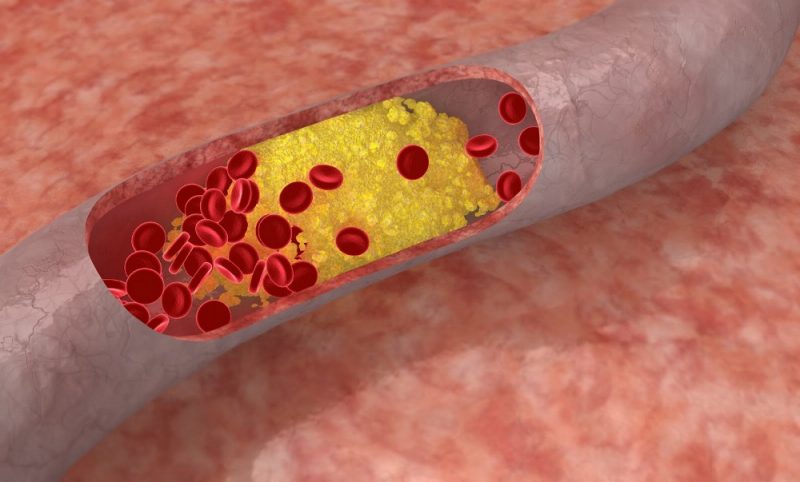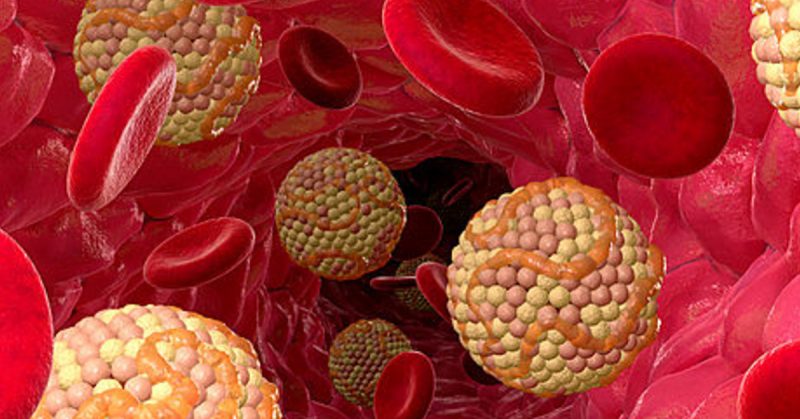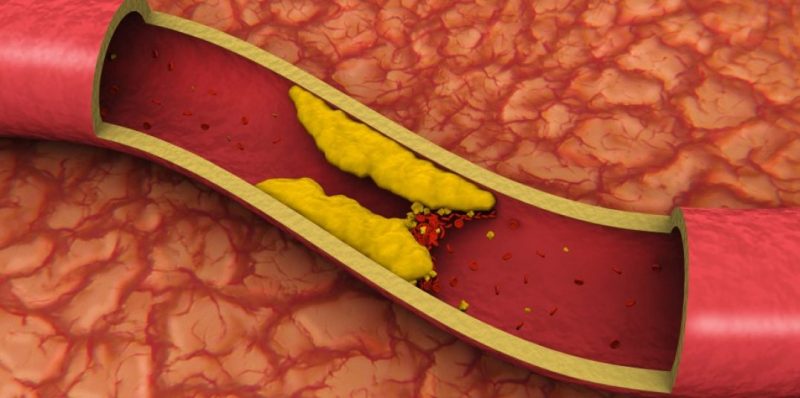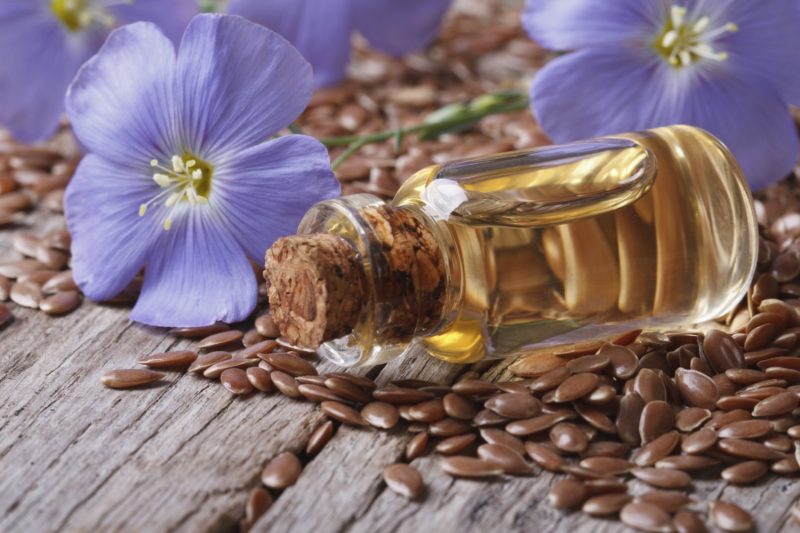Scientists started talking about the negative role of cholesterol in the 18th century, but only at the beginning of the 20th century, Russian scientists, academician N. N. Anichkov and a group of researchers under his leadership, experimentally proved the importance of cholesterol in the pathomorphology of atherosclerosis. However, during this period of war and revolution shook the world and the Russian Empire. Information about vascular cholesterol plaques was “pushed aside” until after the Second World War, the United States raised the topic of cholesterol. Opening the bodies of the dead soldiers, the doctors noticed that in ¾ of the victims the vessels had pronounced signs of pathological changes. But the age of the soldiers was 20-23 years. So there was a need for serious studies of the properties of lipids and the creation of a table of cholesterol norms in men by age.
Material Content:
Study History and Short Description
In their experiments on pigeons, researchers N.N. Anichkova fed them for a long time with "high-calorie food." After opening, they saw pathological changes in the heart and blood vessels of birds, characteristic of atherosclerosis in humans. Thanks to the authority of Anichkov and the inertia of the scientific thinking of subsequent generations, a struggle began with calories, overeating, bad habits and other factors. In the early 60s in America launched a program to combat cholesterol (cholesterol). Following, many developed European countries launched companies against atherosclerosis.

The following factors are considered to be the cause of the appearance of excess cholesterol:
- overweight;
- low physical activity;
- eating fatty foods;
- bad habits, especially smoking;
- age - the risk of atherosclerosis, heart attack and stroke rises after 50 years.
Research on the cholesterol itself was generously funded, new laboratories opened, and “lightweight” products, spreads, and baby food without cholesterol appeared on the market.
But in the heat of the fight against cholesterol, some facts were missed that called into question the effectiveness of the measures developed:
- even Nazi surgeons, who carried out their inhuman experiments in concentration camps, noted that blood vessels were “clogged” with cholesterol plaques in extremely emaciated, long-malnourished prisoners. The number of people suffering from atherosclerosis did not decrease during the period of the hungry war years;
- the researchers were forced to admit that patients with normal and even low cholesterol levels die from cardiovascular pathologies;
- in young children and some adults, plaques dissolve spontaneously, without treatment;
- high cholesterol levels are recorded even in newborns.
All these facts require careful consideration, because, as it turned out, the reasons for increasing cholesterol are not so clear. To understand what factors affect the increase in cholesterol in the body, it is necessary to consider what is cholesterol and its role in the body.
“Bad” and “Good” Cholesterol
Cholesterol in the human body is present in free and bound form. Endogenous cholesterol is synthesized within the body, and exogenous cholesterol with products enters the digestive tract, from where it is absorbed into the blood. But lipids do not dissolve in liquids, so in order to get into the blood, cholesterol must change its properties. The lipid is isolated by a multilayer shell, forming a kind of capsule, the surface of which interacts with water. Each such capsule contains about 1,500 cholesterol molecules. To target a target, it contains a “signal” protein on its surface, which is recognized by liver cell receptors. For this discovery, scientists at the University of Texas at Austin (USA) received the Nobel Prize.
But, as it turned out, not all “capsules” are equipped with such signaling proteins. Some capture and transport free cholesterol into the liver.
This type of cholesterol was called "α-lipoprotein" or "good" cholesterol. And cholesterol with signaling proteins - "β-lipoprotein" or "bad" cholesterol. In the test forms, “good cholesterol” is indicated by the abbreviation HDL, and “bad” by LDL.
HDL - high density lipoproteins are formed in:
- liver cells;
- blood plasma during the breakdown of large fat molecules that are absorbed in the small intestine from food (chylomicrons);
- intestinal walls.
They “capture” free cholesterol and transfer it to liver cells, and also serve as a source of substances necessary for the structure and functioning of body cells.

LDL - low density lipoproteins are synthesized by liver cells and the vascular system of an organ under the action of specific liver enzymes.
LDL also transfers cholesterol to the liver, from where it is used in the synthesis of:
- hormones;
- skin and its derivatives;
- bile acids.
LDL is essential for normal functioning:
- connective tissue;
- kidney filtering system;
- bone marrow;
- cornea of the eyes;
- nervous system;
- pituitary gland.
"Density" depends on the ratio of free cholesterol to capsule proteins. In "bad" cholesterol, there is more free cholesterol than proteins, and the density is lower. In the blood, HDL interact with LDL. Why are some lipoproteins called "good" and others are "bad" if they are all needed in the body? Simply, if HDL “seizes” free cholesterol and delivers it for processing, then it is “good” cholesterol. And LDL is “bad” cholesterol, which can be deposited on the walls of blood vessels, forming insoluble plaques leading to cardiovascular disease.However, the causes of severe vascular disorders are not so much in "quality" as in the amount of cholesterol.
If N.N. Anichkov hypothesized that the formation of plaques on the walls of blood vessels of cholesterol is unnecessary for the body, then modern researchers adhere to a slightly different point of view.
According to one hypothesis, plaques form in places where the vessel is damaged. This is a kind of "patch". They become dangerous when the vessel cannot recover for a long time, the plaque is impregnated with calcium and hardens. Precisely calcification is a malfunction. And the reason for the long process of vessel regeneration is the lack of “building material” - proteins.
According to another theory, it is “bad” cholesterol that penetrates the walls of blood vessels, accumulating in them, performing lipolysis (damaging the structure) and causing damage characteristic of atherosclerosis.
The cause and signs of increasing blood cholesterol in men
If the conversion time of LDL is longer, and their concentration in the blood is higher and, in addition, some of the “bad” cholesterol is oxidized and destroyed by negative radicals, then the risk of developing atherosclerosis increases. Such cholesterol is especially dangerous, and not only damages the inside of the vessels, but also interacts with blood coagulation factors, causing the formation of blood clots.
The cause of the increase in blood cholesterol levels are genetically determined abnormalities:
- coding of the LDL receptor, due to which cholesterol cannot penetrate into the liver cells and be utilized in them;
- decreased cholesterol conversion due to an imbalance in transport molecules;
- decreased sensitivity of target cell receptors.
External and internal factors only aggravate the pathology and lead to the occurrence of pathologies at an early age.

External factors for increasing blood cholesterol are:
- increased body weight;
- violation of the diet (overeating), the use of harmful products in excess containing animal fats, preservatives and other additives;
- bad habits - smoking and alcohol abuse;
- physical inactivity;
- the use of certain drugs - diuretics, steroids.
But in addition to external factors, internal factors are of great importance in the violation of transport and lipid metabolism:
- metabolic disorders - atherosclerosis, diabetes, obesity;
- inflammation and swelling of the pancreas;
- diseases of the cardiovascular system (CVS) - hypertension;
- liver pathology - cirrhosis, hepatitis;
- hyperthyroidism;
- renal failure;
- intoxication.
Today, researchers name more than 30 reasons that cause an increase in cholesterol. And one of the important triggers of cholesterinemia is the age of the man.
With the years lived, the number and severity of changes in the body increases - decreases:
- speed of the main metabolic processes;
- immune activity;
- liver function;
- vascular tone and permeability.
Scientists call another reason for elevated cholesterol - psycho-emotional stress. The so-called incomplete emotional reactions (the state when psychoemotional conflicts do not have physical discharge) lead to the accumulation of substances (lipoproteins, catecholamines) released during stress.
Elevated cholesterol, as a rule, does not have pronounced symptoms.
But with hypercholesterolemia, the following symptoms are recorded:
- the appearance of yellow spots and “lumps” (xanthomas) on the surface of the eyelids, skin, tendons of the extremities, in the area of skin folds;
- the formation of a gray rim along the periphery of the cornea of the eyes;
- xanthomas (tubercles with altered cells filled with cholesterol) of the gastric mucosa and other internal organs.
Some triggers triggering the accumulation of cholesterol can be adjusted. Unchanging factors include age, genetic conditioning, and gender.
The norm of cholesterol in men by age
Already the first studies (Framingham Heart Study, USA, 1948) noted a direct relationship between age and cholesterol level. Therefore, in the study, reference (norm) values are indicated in accordance with the age of the patient.
The optimal norm in young men after 30 years
Before figuring out which blood cholesterol norm is optimal for young men after 30 years, it should be noted that different cholesterol has different damaging ability. The activity of total cholesterol and the amount of LDL cholesterol, which destroys blood vessels, and disrupts blood flow in all age groups, are determined.

The reference value for this age group is:
- HS total - 3.57 - 6.58 mmol / l;
- LDL cholesterol - 2.02 - 4.79 mmol / L.
Determination of LDL cholesterol after 30 allows you to assess the risk of developing CVD diseases and atherosclerosis in old age.
The norm for men aged 40-50
The physiologically determined increase in lipids with age reflects the norms of cholesterol and cholesterol of LDL in men in the age group of 40-50 years:
- CS total - 3.91 - 7.15 mmol / l;
- LDL cholesterol - 2.25 - 5.23 mmol / L.
Up to 40 years in the norm of sharp fluctuations in HDL cholesterol. And in the age group of 40 years, a jump in the reference cholesterol of high density lipoproteins up to 0.88 - 2.12 mmol / l is observed. After 45 years, the value becomes the same (0.78 - 1.66 mmol / l).
Normal blood levels in men after 50-60 years

In this age group, destructive and degenerative processes increase, which provokes an excess of cholesterol and, accordingly, an increase in its activity. The normal level of free cholesterol increases to 4.09 - 7.15 mmol / L. The LDL indicator also increases - 2.28 - 5.44 mmol / L.
Cholesterol after 60 - 65 years
Cholesterol continues to increase in men over 60 years of age. On average, the reference value is 4.45 - 7.77 mmol / L.
Table of cholesterol norms in men by age
The table below shows the reference values of cholesterol in accordance with the age of men:
| Age interval | Reference values of cholesterol (mmol / l) | ||
|---|---|---|---|
| free cho | Cholesterol | HDL cholesterol | |
| 5 | 2,95 – 5,25 | ||
| 5-10 | 3,13 – 5,25 | 1,63 – 3,34 | 0,98 – 1,94 |
| 10-15 | 3,08 – 5,23 | 1,66 – 3,34 | 0,96 – 1,91 |
| 15-20 | 2,91 – 5,10 | 1,61 – 3,37 | 0,78 – 1,63 |
| 20-25 | 3,16 – 5,59 | 1,71 – 3,81 | 0,78 – 1,63 |
| 25-30 | 3,44 – 6,32 | 1,81 – 4,27 | 0,80 – 1,63 |
| 30-35 | 3,57 – 6,58 | 2,02 – 4,79 | 0,72 – 1,63 |
| 35-40 | 3,63 – 6,99 | 1,94 – 4,45 | 0,88 – 2,12 |
| 40-45 | 3,91 – 6,94 | 2,25 – 4,82 | 0,70 – 1,73 |
| 45-50 | 4,09 – 7,15 | 2,51 – 5,23 | 0,78 – 1,66 |
| 50-55 | 4,09 – 7,17 | 2,28 – 5,26 | 0,72 – 1,63 |
| 55-60 | 4,04 – 7,15 | 2,31 – 5,10 | 0,72 – 1,84 |
| 60-65 | 4,12 – 7,15 | 2,15 – 5,44 | 0,78 – 1,91 |
| 65-70 | 4,09 – 7,10 | 2,49 – 5,34 | 0,78 – 1,94 |
| > 70 | 3,73 – 6,86 | 2,49 – 5,34 | 0,85 – 1,94 |
If you carefully analyze the indicators of cholesterol, a feature of the growth graph becomes noticeable. Contrary to expectations, the level of cholesterol in the group of men over 70 does not increase, but decreases. A decrease in LDL cholesterol was noted in the group of 35-40 years. Such fluctuations cannot be explained only by age-related changes in the body of men.
Diet for high cholesterol
Since the "bad" cholesterol comes with food, in order to reduce its amount it is necessary to adjust the food.

To cope with an increased level of cholesterol, a diet will help, implying:
- limiting the intake of foods high in animal fats and cholesterol;
- calorie control of food;
- increasing the proportion of foods high in polyunsaturated fatty acids;
- an increase in the number of products containing vitamins with an antioxidant effect.
The most appropriate diet is considered Mediterranean. In order to activate the process of cholesterol metabolism, it is necessary to reduce not only its intake with animal lipids, but also to control the calorie content of food. Depending on the severity of the work performed by the man, the calorie content should be 2000-2500 kcal.
With hypercholesterolemia, drug therapy, including the use of statins and other lipid-lowering drugs, as well as therapeutic apheresis - removal of LDL cholesterol by passing the patient’s blood through a column with a sorbent that binds “bad” cholesterol may be required.
What foods lower cholesterol?
A diet with high cholesterol can significantly reduce LDL.

Cholesterol lowering foods are foods that contain unsaturated fatty acids:
- vegetables and fruits - carrots, cabbage, lettuce, avocados, citrus fruits;
- seafood;
- nuts - almonds, macadamia, hazelnuts, pecans, pistachios, cashews, peanuts, pinecones;
- fish - salmon, sardines, mackerel, salmon;
- oilseeds - sunflower, flax, poppy, mustard,
- vegetable oils - olive, soybean, rapeseed, linseed, sunflower, peanut.
Plant products and oils contain phytostanols and phytosterols - substances similar to cholesterol and competing with it in the process of absorption in the intestine. The more plant stanols and sterols enter the body, the less cholesterol penetrates into the blood. The use of vegetables and fruits containing stanols by 10-15% reduces the level of endogenous and exogenous cholesterol in the blood of a man.
But the intake of these substances with food is not enough to effectively reduce cholesterol. Studying how to lower cholesterol, scientists have found that stanol esters are more effective. Their greatest content is noted in vegetable oils. In 1989, the Finnish company Raisio Group mastered the production of products containing stanol esters from rapeseed and soybean oil - mayonnaise, yogurt, spreads, kefir, milk of the Benecol series.
Thanks to the introduction of the healthy nutrition program and the introduction of the “functional food” of the Benecol series into the daily diet, the mortality rate of the able-bodied population of Finland from diseases caused by high cholesterol is now 80% lower than 30 years ago.
How to lower cholesterol folk remedies?
Alternative methods of lowering cholesterol are based on:
- the use of medicinal plants containing stenol esters - flax seeds, linseed oil;
- the use of plants that stimulate the excretion and outflow of bile - barberry, lingonberry, sacred vitex, hernia, St. John's wort, cotoneaster, madder;
- preparations from plants that lower blood cholesterol - aromatic collision, licorice, Japanese Sophora, Caucasian dioscorea, cyanosis blue.

The simplest and most effective means of combating "bad" cholesterol is the root of the Caucasian or Nippon dioscorea. On its basis, they make a medicine for hypercholisterinemia - Polisponin. At home, the therapeutic effect can be achieved by taking powder from the root of the plant. Take the powder with honey, mixing 1 tsp. honey and powder. The mixture should be taken after meals, 3-4 times a day. The course of treatment is 1.5 weeks, then for 5 days it is necessary to take a break and repeat the mixture.
It has a pronounced anticholesterol effect infusion of ordinary tar. To prepare it, take 2 tsp. herbs and steamed with 1 cup boiling water for 2-3 hours. Take ¼ cup 4 times a day.
Folk remedies act gently and without side effects, but it will take a long time to take herbal preparations - 2-4 months.












